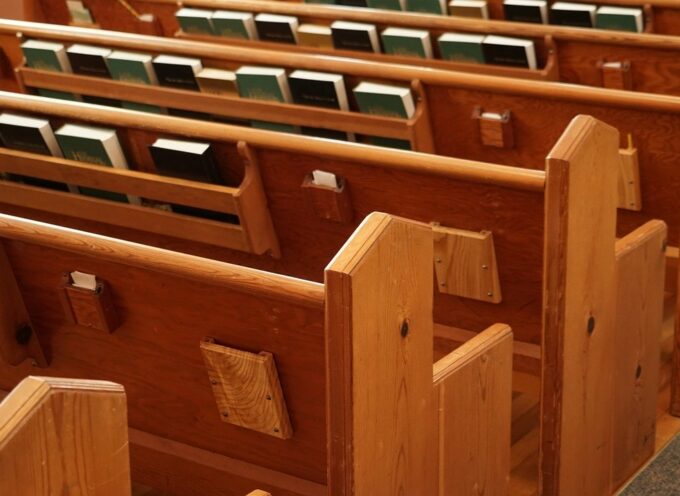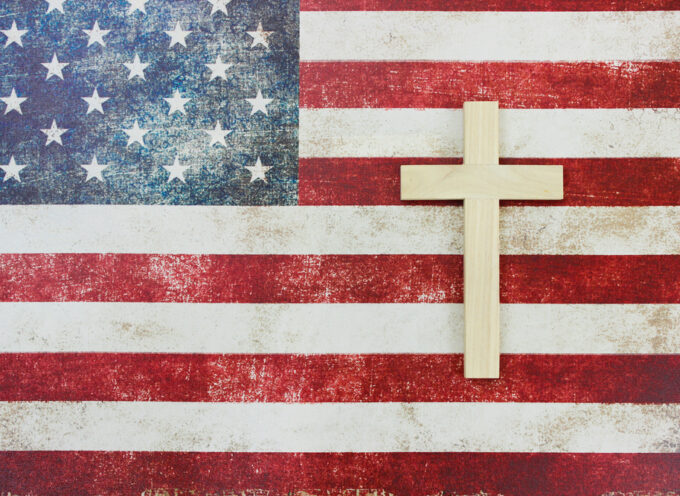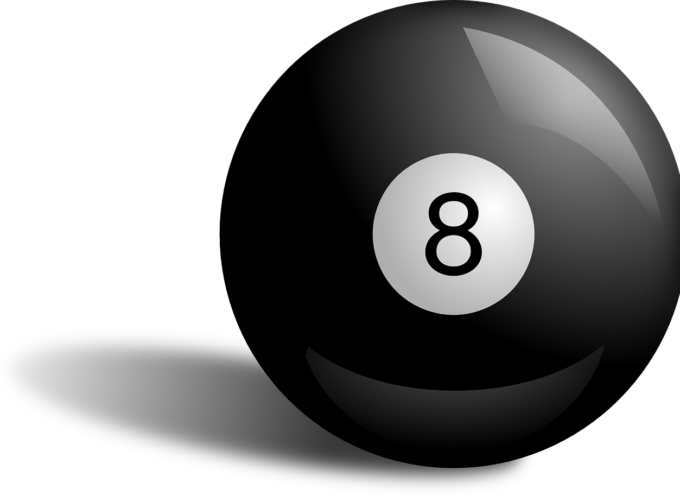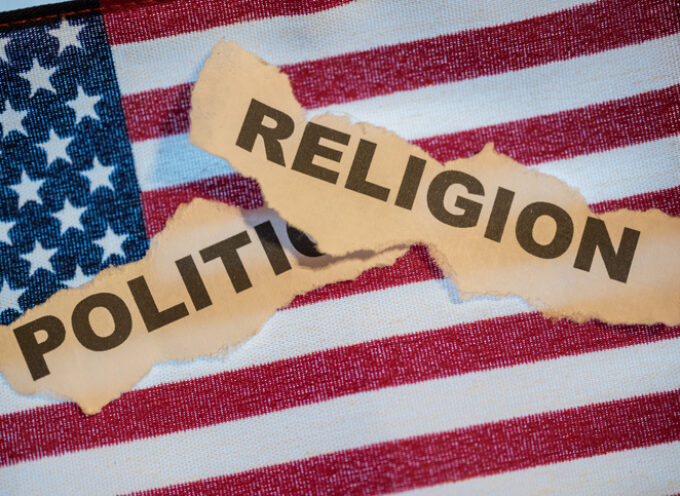Of the many spectacles offered by the 2016 election cycle, none are more fascinating than the accelerated disintegration of both major political parties, with each party being composed of an increasing number of deeply divided factions. To what extent they can reintegrate is a question still to be determined.
Nobody knows exactly what to expect. Politicians, pundits, and citizens alike are wringing their hands. But is it really such a bad thing that the parties are disintegrating? If the parties are in danger of unraveling, should we resist it? Not necessarily. Evangelicals should at least consider the possibility that a multi-party system is what our nation needs at this stage of its existence. I write as a conservative evangelical, and think that we evangelicals might benefit tangibly and significantly from such a system.
In recent days, a number of commentators have promoted a multi-party system or spoken in favor of a specific “third party.” Peggy Noonan, for example, has argued that the 2016 election cycle will cause a significant number of Republicans and Democrats to break from their own parties and form a third party that coalesces around certain shared commitments. Matthew Dowd recently pointed out that our Founding Fathers were concerned that the United States might fall into a bitter partisanship between two entrenched monopolies, that their worries have been realized as the two major parties are undermining our democracy by creating an “us v. them” mentality, and that the way forward is to support innovative new political parties so that they and the major parties are forced to compete for the People’s vote.
My aim in this article is not exactly the same as that of Noonan, Dowd, or other commentators. My main concern, my “skin in the game,” is for evangelicals to find a way for their voice to be heard with clarity. While we can do that through our local church worship, our non-profit organizations, and our Christian publications, we are finding it increasingly difficult to do politically through the two-party system. I do not feel represented in any adequate way, for example, by either of the two major-party presidential nominees.
I also want to note that the merits of a multi-party system have voiced by a number of evangelical politicians and politicians over the years; this argument does not depend on what happens in the 2016 election cycle. One of the most prominent and articulate of those voices is James Skillen, author of a number of political science texts (recently, The Good of Politics) and formerly the Executive Director of the Center for Public Justice. In book published in 1994, Recharging the American Experiment, he foresaw the breakdown of the major parties and the need for a multi-party system, and he argued theologically for a multi-party system on the basis of “principled pluralism.”
This sort of “principled pluralism” is what I argued for in One Nation under God and is the theological basis for why I think Americans should consider whether a multi-party system might serve us better. However, while the argument in that book (for principled pluralism) is theological, its application in this article (to a multi-party system) is political-scientific; and for that reason I lean heavily on a political scientist, Skillen, and intend the article in more of a suggestive manner than declarative.
Based on Skillen’s work and the United States’ current social, cultural, and political situation, here are eight reasons we should consider the possibility that a multi-party system would serve Americans better in our current era.
1. Our current system of electoral representation strains to meet the challenges of our increasingly diverse nation.
First, we must recognize a number of ways our current system is struggling to meet the challenges of our increasingly diverse country. In Recharging the American Experiment, Skillen lists six components of our electoral system that are aggravating one another in a downward spiral. Here I paraphrase and slightly modify his points:
- Our country has only a single elected official to represent more than 300 million people.
- Our major political parties are no longer able to construct national agendas that bind their candidates together for post-election governance.
- Political candidates who win elections represent entire districts of people (including large numbers of people who voted against them) rather than a constituency of citizens who voted for them.
- Voters feel disconnected from, and even mistrustful toward, the politicians who supposedly represent them.
- Elected politicians can and often do function as lone rangers.
- Elected politicians tend to have their strongest connections with special interest groups rather than with national parties or the supporting voters of their own districts.
As a result of this downward spiral, Skillen argues, there are two negative consequences:
- Elected representatives tend to be special interest brokers rather than public-interest representatives.
- Citizens tend either to be uninvolved in politics or, at the other extreme, throw their energy into special interest pressure games, court litigation, or marches and protest movements. Far less often is their energy directed into mature public-interest debate or the construction of substantive platforms and policy alternatives.
2. The healthiest electoral systems foster the strongest connections between citizens and elected representatives.
In order to improve upon stressed two-party system of representation, we need next to consider what representation should mean. In our view, a healthy form of representation should foster strong connections between elected representatives and citizens. Those strong connections are better forged by political parties than by special interest groups because the latter do not submit their ideas to the electoral process or come under control of the citizens. The former, however, can function as powerful public accountability structures who bear the responsibility of designing platforms and programs to serve the citizens and ensuring that their candidates govern accordingly.
Skillen crystalizes the ideal when he writes, “In sum, American citizens should have an electoral system that allows them to be represented meaningfully, that encourages the growth of strong parties that connect voters and elected officials closely, and that elevates public-interest statecrafting about interest-group brokering as the chief task of government in Washington.”
3. One way to foster such connections is to adjust the House of Representatives to a multi-party system of proportional representation (PR).
One way to forge strong connections is to modify the way we elect members to the House of Representatives. Under the current system, each state’s number of seats is determined by the size of its population, and those seats are then divided by voting districts in which “winner takes all.” If a Republican wins 51% of the district, he or she then represents the interests and ideas of all of the citizen’s districts, including its democrats, libertarians, democratic socialists, nationalists, and progressives. All of the losing votes, even if they total 49%, count for little or nothing.
An alternative to this system would be a system of multi-party proportional representation (PR). A PR system makes each state into a single, multimember district whose seats would be filled proportionally according to the vote tallies. For example, if New York state has 29 seats in the House, a system of PR would allow every political party (not just the major parties) to run twenty-two candidates for the entire state. The election would divide the seats in accord with the votes. If Democrats win 55% of the vote, they get 55% of the seats. If Republicans get 35% of the votes, Libertarians 5%, and Green Partiers 5%, they are allotted seats accordingly. In this system, every vote counts, and minority views are represented. Nearly every voter would be represented by at least one person whose party he or she voted supports.
4. The advantages of PR seem to fit very well this era in our nation’s democracy.
One criticism of proportional representation is that the proliferation of parties would destabilize the government. Another criticism is that a statewide PR system would not guarantee voters a localized representative; in other words, their representative might hold the same political views but be from another corner of the state.
In response to the first criticism, the proliferation of parties might be just what we need. Wouldn’t it be better for citizens to see, transparently, the full diversity of the electorate rather than having it veiled by two major parties purporting to represent the entire citizenry? And would an alternative system be any more unstable than what we’ve already got? Perhaps a PR system would be as stable than our present system, but have the added benefit of clearly-defined party platforms and more closely connected representation. In response to the second criticism, while it is true that one’s representative might be more distant geographically, he or she would be considerably closer ideologically. In an era of instant communication, the geographic distance doesn’t matter as much and the ideological closeness matters perhaps even more.
5. PR could bring greater accountability to Washington D.C.
In a multi-party PR system, political parties exert great effort to define themselves clearly in comparison and contrast to the other parties. The parties find it in their best interests to define what they will do in relation to a broad array of issues, showing why their solutions are better than the ones proposed by other parties. The candidates of those parties don’t have to behave as chameleons during primaries, making contrasting promises to competing sets of interest groups; instead, candidates have clearly defined agendas to which they are held accountable. Special interest groups would not be easily able to “purchase” representatives before or after the elections, because citizens would be directly connected to their candidates, able to hold them accountable from start to finish.
6. PR would produce more (and probably) better nominees for President.
In a multi-party PR system, each national party will be forced to map out comprehensive and distinctive platforms, articulating their positions on policy issues and how their policy position on each issue coheres with their position on the other issues. Each national party will put forward their strongest leaders for Congress and for President, leaders who feel less pressure to talk out of both sides of their mouth during primary season in order to satisfy the numerous factions present within each party of our current two-party system.
Consider the current election cycle. Instead of having to settle for two of the most disliked and divisive politicians in American history, a multi-party system would have given us a number of strong candidates. Those candidates would not have had to remain coy or engage in doublespeak during the primary process, and would be disciplined candidates who are less easily bought out by special interest parties.
7. Even without a PR system for the House, there still is a viable path toward multiple major parties.
Even if the House of Representatives never adjusted to a system of proportional representation, there is a viable path toward expanding the number of major American political parties. In fact, as Peggy Noonan opined recently in the Wall Street Journal, the 2016 election cycle will probably catalyze the creation of at least one such party.
Although nobody will be surprised when a number of Republicans break from the GOP because of Trump’s candidacy, they might be surprised when a number of Democrats break from their party. In fact, Noonan argues that the Democratic party is ripe for such a break. Democrats will leave, she avers, because they are uncomfortable with smiley-face socialism that might become actual socialism; because they no longer will tolerate the extreme political correctness fostered at our public universities and in our public restrooms; because “they will have increasing qualms about spending $60,000 a year to have their bright, kind children turned into leftist robots.”
In the near future, she argues the disaffected Republicans and Democrats will create their own party. “It will be pro-growth, moderate on social issues, more or less neoconservative in its foreign policy. It will be smallish but well-heeled.”
I’m not sure what the Las Vegas betting odds are on Noonan’s proposal, but this article’s proposal doesn’t depend on whether or not she is right about the shape that a third party might take. What is most important is that she’s placed her finger on the nerve of what might happen in upcoming years: the emergence of additional political parties that clearly define their beliefs and values, hold their politicians accountable to the party and to the voters, and have enough power to sway elections nationally.
8. A Multi-Party System Would Provide A Voice for Every Voter and a Unity in Diversity.
As the United States becomes an increasingly diverse country, we need to find the electoral process best suited to a healthy and ideologically-diverse twenty-first century democracy. This system needs to have strong national parties that define their priorities and platforms clearly, hold their candidates accountable to the party and the people, thereby giving every citizen a voice in the national political debate. It needs to demote special interest politics while promoting genuine party politics in which citizens carry on sustained and reasoned debate about matters important to the national interest.
I am willing to bet that a multi-party system (especially one with proportional representation in the House) would cause a significant increase in voter turnout. Additionally, it would stand a good chance of helping unify our political order precisely by giving voice to our nation’s diversity rather than muffling it. Each citizen’s unique voice could be disciplined and articulated through one of multiple national parties and into shared responsibility for our common life together.
Multi-Party in the Meantime
I am an evangelical who is conservative both theologically and politically. From where I stand, the 2016 election cycle is an almost-unmitigated catastrophe. The nominees of the major political parties, Donald Trump and Hillary Clinton, are among the worst two candidates in the history of American presidential elections. Out of more than 300 million Americans, this is what the two major parties could muster for the highest office of the land. I do not know many evangelicals who feel adequately represented by either candidate.
I say “almost-unmitigated” because there are a couple of ways in which it might be a blessing in disguise. The first blessing, and the thesis of this article, is that the disillusionment caused by the 2016 election cycle might open the door for a multi-party system in which evangelicals can find a party home that more closely represents their beliefs and values. A second blessing is the reminder it brings that we will never find a platform that satisfies our evangelical yearnings until Jesus returns to install a one-party system in which the lion lies down with the lamb (Is 11:6) and in which justice rolls down like the waters (Amos 5:24).
Subscribe
Never miss a post! Have all new posts delivered straight to your inbox.








Speaking as a sanders supporter I completely agree. I’m disgusted with the recent partisanship plaguing our country. The two party system has failed me as well. I may have completely different beliefs than you but that doesn’t change that we should both have representation in our government. I personally am sick of the democrats pandering to big corporations and not taking bold strokes. I agree with them on many instances but feel they do not represent me. I hope we can all come together to fix this flawed system so that we can have a productive and inclusive government for all of america.